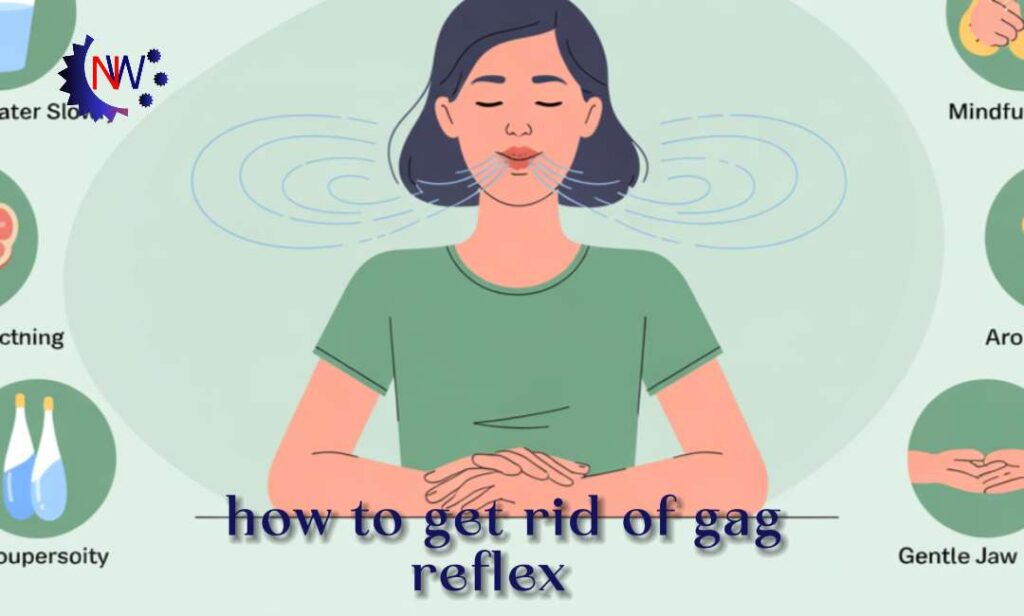How to Get Rid of Gag Reflex: A Complete Guide

What Is the Gag Reflex?
The gag reflex (also called the pharyngeal reflex) is a natural, involuntary contraction of the back of the throat triggered by touching the soft palate, the back of the tongue, the tonsil area, or the back of the throat. It’s a protective mechanism that helps prevent choking or swallowing harmful objects. While it’s important for safety, an overly sensitive gag reflex can make everyday activities—like brushing your teeth, swallowing pills, or visiting the dentist—uncomfortable or even impossible.
Why Is My Gag Reflex So Sensitive?
Some people have a more sensitive gag reflex than others. Reasons can include:
- Anxiety or fear (especially about dental work or medical procedures)
- Past negative experiences (such as choking or vomiting)
- Medical conditions (like acid reflux, post-nasal drip, or neurological issues)
- Anatomy (some people naturally have a more sensitive throat)
- Medications (some drugs can increase sensitivity)
If your gag reflex is new, severe, or accompanied by other symptoms (like difficulty swallowing, pain, or weight loss), see a doctor to rule out medical causes.
How the Gag Reflex Works
The gag reflex is controlled by the glossopharyngeal (IX) and vagus (X) cranial nerves. When the back of your mouth or throat is stimulated, these nerves send a signal to your brainstem, which triggers the muscles in your throat to contract. This is why the reflex is so fast and hard to control consciously.
Quick Tips to Suppress the Gag Reflex
1. Breathe Through Your Nose
Focusing on slow, deep nasal breathing can help relax your throat and reduce the urge to gag. Try inhaling for four counts, holding for two, and exhaling for six counts.
2. Numb the Area
- Throat sprays: Over-the-counter numbing sprays (like those for sore throats) can temporarily reduce sensitivity.
- Ice: Suck on ice chips or a popsicle before a dental visit or brushing your teeth.
- Cold water: Rinse your mouth with cold water before and during triggering activities.
3. Distract Your Brain
- Squeeze your thumb: Make a fist with your left hand and squeeze your thumb inside your fingers. This can distract your brain and reduce the reflex for some people.
- Wiggle your toes: Focusing on moving your toes or lifting a leg can help shift your attention away from your throat.
- Pinch your skin: Lightly pinch your arm or leg to create a competing sensation.
4. Try Salt on the Tongue
Some people find that placing a small pinch of table salt on the tip of the tongue before brushing teeth or swallowing pills can help suppress the gag reflex. The salty taste may temporarily override the reflex.
5. Change Your Technique
- Use a smaller toothbrush or tongue scraper to reduce contact with the back of your mouth.
- Brush your teeth at an angle and avoid going too far back.
- Swallow pills with thicker liquids like yogurt, applesauce, or pudding instead of water.
Desensitization: Training Your Gag Reflex
If your gag reflex is interfering with daily life, desensitization (gradual exposure) is the most effective long-term solution. Here’s how to do it:
Step-by-Step Desensitization
- Start with a Toothbrush:
Use a clean toothbrush. Gently touch the tip of your tongue with the bristles until you feel the urge to gag. Stop immediately. - Repeat Daily:
Do this once a day, holding the brush in place for a few seconds longer each time, until you can tolerate the sensation without gagging. - Move Further Back:
Once you’re comfortable, move the brush slightly further back on your tongue. Repeat the process, gradually working your way toward the back of your mouth. - Progress to Other Tools:
Try using a tongue scraper or your finger as you get more comfortable. - Practice Patience:
This process can take several weeks, but most people see significant improvement.
Tip: Always stop if you feel uncomfortable or anxious. Go at your own pace.gum disease
Relaxation and Mindfulness Techniques
Anxiety and stress can make the gag reflex worse. Try these techniques before and during triggering activities:
- Deep Breathing: Inhale slowly through your nose, hold, and exhale slowly through your mouth.
- Progressive Muscle Relaxation: Tense and relax each muscle group in your body, starting from your toes and working up.
- Visualization: Imagine yourself in a calm, safe place.
- Mindfulness: Focus on the present moment and your breathing, not the activity that triggers your gag reflex.
Special Situations
1. At the Dentist
- Tell your dentist: They can use numbing sprays, take breaks, or adjust their technique.
- Breathe through your nose and use distraction techniques.
- Ask for a bite block: This keeps your mouth open and reduces the urge to gag.
- Schedule morning appointments: You may be less sensitive earlier in the day.
2. Swallowing Pills
- Use a pill swallowing cup (available at pharmacies).
- Try the “lean forward” method: Place the pill on your tongue, take a sip of water, and tilt your chin toward your chest as you swallow.
- Crush or split pills (ask your pharmacist first) and mix with soft food.
3. Brushing Teeth or Tongue
- Use a child-sized toothbrush or a tongue scraper.
- Brush at an angle and avoid the very back of your tongue.
- Desensitize using the step-by-step method above.
When to Seek Professional Help
If your gag reflex is severe, persistent, or interfering with eating, drinking, or medical care, consult a healthcare professional. They may recommend:
- Speech therapy: For desensitization and swallowing techniques.
- Cognitive-behavioral therapy (CBT): For anxiety-related gagging.
- Medical evaluation: To rule out underlying conditions.

Myths and Facts About the Gag Reflex
Myth: You can get rid of your gag reflex completely.
Fact: You can reduce and control it, but it’s a protective reflex that shouldn’t be eliminated entirely.
- Myth: Only anxious people have a strong gag reflex.
Fact: Anatomy, medical conditions, and genetics also play a role. - Myth: Gagging is always psychological.
Fact: Physical factors are often involved.
Summary Table: Ways to Reduce Gag Reflex
| Method | How It Helps |
|---|---|
| Nasal breathing | Relaxes throat |
| Numbing sprays/ice | Reduces sensation |
| Distraction techniques | Shifts focus away from gagging |
| Desensitization | Trains throat to tolerate touch |
| Salt on tongue | Temporarily suppresses reflex |
| Relaxation techniques | Reduces anxiety and sensitivity |
| Professional help | For severe or persistent cases |
Frequently Asked Questions
Can you permanently get rid of your gag reflex?
You can’t eliminate it completely (and shouldn’t), but you can reduce its sensitivity with practice and desensitization.
Is a strong gag reflex normal?
Yes, but if it interferes with daily life or is new, see a doctor.
Can anxiety make my gag reflex worse?
Absolutely. Relaxation and mindfulness can help.
Are there medications to reduce gag reflex?
Some doctors may prescribe anti-nausea or anti-anxiety medications for severe cases, but this is rare.
Is it safe to use numbing sprays often?
Occasional use is fine, but don’t overuse them. Always follow package instructions.
Conclusion
A sensitive gag reflex can be frustrating, but with the right techniques, you can manage or reduce it. Start with simple tips like nasal breathing, distraction, and numbing sprays. For long-term improvement, try desensitization training and relaxation techniques. If your gag reflex is severe or interfering with your life, don’t hesitate to seek professional help. With patience and practice, most people can gain better control and make daily activities much easier.




